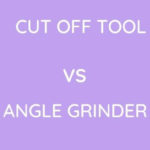Metal sheets can be an excellent option for building a barn or a roof for any project. They protect from natural elements. Good quality metal sheets are rust-proof and lightweight, which means that they are easy to install and have a long life. Metal roofing can seem intimidating if you haven’t done it before. With so many tools available to cut metal and the different tips and reviews, it can get confusing. In this article, we will be giving you step by step guides on how to cut metal roofing.
Contents
How To Cut Metal Roofing – Step By Step Guide
Step 1
Step 1: Calculate the number of metal sheets you need. This can be done by measuring the area to be covered, the length and width of each sheet, for example. If the area to be covered is 100 sq ft, you have ten metal sheets of 10 ft length and 2 feet width. You will need 100/(10*2) = five sheets.
Now calculate the size of each sheet to be cut. For example, if you want to keep the size of each sheet as 1 ft by 1 ft, you have five sheets of 2X10 ft and the area to be covered 100 ft, you will need 100 pieces of 1X1 ft sheets.
Step 2
Using the tape measure and marker, measure and mark the sheets where they need to be cut. In the case of circular cuts, use the compass for accurate marking. Using the scale, mark the straight lines using the marker.
Step 3
Using the C- clamps, clamp the metal sheet onto the workbench or table on all four sides. The metal sheet should be placed such that the underside of the sheet is placed on the table. As the underside is flatter than the top ridges and grooves, it gives more stability. Use as many C-clamps as necessary to make sure that the sheet is secured firmly to reduce vibrations while cutting.
Step 4
Using Shears: Using shears, cut through the marked lines on the metal sheet. Using shears is similar to using scissors, but the tool can cut through metal. In case you are cutting a circle, using a drill machine, drill a hole inside the middle of the marked circle. Turn off the drill machine. Then push one of the blades of the shear inside the hole and cut to one of the marked points. One the marked point is reached, cut along the marked circle.
Using A Reciprocating Saw Or A Grinder: This step is to be used when the number of cuts to be made, and the accuracy level is high. A reciprocating saw or a grinder is not recommended to make cuts with low angles or circles. A reciprocating saw is not recommended when the grooves or ridges on the metal sheet are too deep. In such cases, use a grinder.
Step 4
In the case of using a reciprocating saw, reinforce the supports as it causes a lot of vibration. Fit the blade on the saw. A carbide blade would be the best one. Line up the blade with the marks on the sheet. Turn on the reciprocating saw and move slowly, cutting through the metal sheet along the marked line.
In case of an angular cut or a circular cut, using the drill machine, drill a hole inside the middle area of the marked circle. Make sure that the hole is large enough for the blade of the reciprocating saw to go in and out quickly. Turn off the drill machine. Gently push the blade in and turn on the saw. Cut through the circle until you reach one of the marked points of the circle. Once it is within reach, cut along the marked lines slowly.
For a Grinder, fit the metal cutting blade on the grinder. A carbide blade would be the best one. Line up the blade with the marks on the sheet. Turn on the grinder and move slowly, cutting through the metal sheet along the marked line. The same process is to be followed in case of angular cuts, but it cannot be used for smaller angles. It can be used for wider angles and metal sheets with deep grooves and ridges.
Using A Nibbler
A nibbler can be used when the number of sheets to be cut less or moderate. It is best to make angular cuts. It has high accuracy and ease of operation. A nibbler ‘nibbles’ through the metal, similar to a rabbit nibbling on a carrot. However, it can be time-consuming if the number of sheets to be cut is high.
Step 4
Line the blade of the Nibbler with the marked line. Turn on the Nibbler and slowly push it through the metal sheet, passing it along the grooves and ridges. In case of an angular cut, replace the blade of the Nibbler with the angular attachment. Measure the radius of the circle to be cut. Place the stationary part of the blade in the center of the circle to be cut. Turn on the Nibbler and cut along the circumference to form the perfect circle.
Things You Would Need
- Personal protective gear: This includes protective clear lens eyewear, earplugs, anti-cut heat resistance gloves, safety shoes, and face mask. It is also essential to wear clothes that are resistant to sparks, such as cotton. Avoid wearing loose synthetic clothes.
- Marker, tape measure, compass, and scale: Any standard tape measure and marker can be used. Make sure that the marker can write on metal. The scale will be used to draw straight lines. The compass will be used in case you need to mark circular cuts.
- Shears, Reciprocating saw grinder with carbide blade, Nibbler, and Drill machine: Depending on the type of cut and the type of metal sheet, you will need one of them or a combination of the tools. The drill machine will be used to make the initial hole in a circle to be cut when using a shear, reciprocating saw, or a grinder to cut the metal.
- Workbench or table: Make sure that the workbench or table that you use is long enough to support the metal sheets.
- C- Clamps: Any standard C- clamps can be used. You will need at least four clamps or more, depending on the length of the metal sheet to be cut. It is essential while using a reciprocating saw as it causes a lot of vibration.
FAQs
1. What kind of tool should I use to cut my metal roofing?1.
Various tools can be used to cut metal roofing. It depends on the quantity and accuracy of the sheet cuttings you need. For a small quantity, metals shears can be used. For more accurate straight cuts in large quantities, a reciprocating saw or a grinder can be used. A nibbler can be used if accuracy in angular cuts is a priority.
2. Which is the best tool to use between a grinder, a reciprocating saw, and a nibbler to cut metal roofing?
All the tools have their advantages and disadvantages when it comes to metal cutting. For a reciprocating saw, you can cut metal roofings with smaller ridges. However, if the ridges on the metal sheet are too deep, it becomes difficult to cut accurately. Also, there is a lot of vibration with reciprocating saws.
With a grinder, you can get high accuracy at high speed. However, it is challenging to make angular cuts with a grinder. Also, if the blade is not carbide or diamond cut, there will be a lot of sparks while cutting.
With a nibbler, it is easy to make angular and straight cuts regardless of the type of metal sheet or the shape or its grooves or ridges. However, compared to the grinder, which can cut sheets in a matter of seconds, the Nibbler comes up short.
So the type of tool to be used depends on the type of project you have.
3. Which tool is best for making angular cuts on metal roofing?
The best power tool to make angular cuts on metal roofing is a battery-operated nibbler.
Final Thought
Cutting metal sheets is simple once you know the basics of it. There are a variety of tools that can be used to cut metal sheets, each with their pros and cons. Depending on individual needs and requirements, you can customize the process. We hope that this article has given you enough knowledge on how to cut metal sheets in a quick and easy way









Leave a Reply